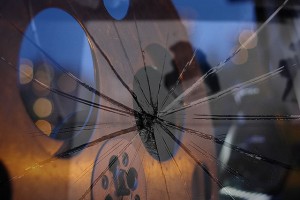Illiberal Hollywood: Unchanged or Worse One Year Later
On May 12, 2015, the ACLU sent a letter to the U.S. Equal Employment Opportunity Commission asking the EEOC to look into the disparity of women directors hired to produce big-budget film and episodic television.
In October last year, the EEOC conducted interviews with women directors in film and television in response to the ACLU’s letter.
TIME reported yesterday that both the EEOC and the Office of Federal Contract Compliance Programs launched investigations into
Today, one year after the ACLU’s letter, things have not only not improved in spite of an increasing amount of press coverage focusing on gender inequity in the entertainment industry.
It’s actually gotten worse:
A tally by TheWrap found 22 consecutive films from Fox — not counting Fox Searchlight, the studio’s art-house division — and 25 consecutive releases from Paramount had only male directors attached. So far, that covers all movies scheduled to hit theaters this year, next year and 2018 too.
The problem is systemic, from agents to studios — even union representation has been less than supportive:
Some women directors said they have noticed a backlash for their activism as well, and from a source that might be expected to be an ally. Over the summer, DGA leadership attempted to take over administration of a Facebook group of women directors who were discussing problems in the industry, according to Giese. …
Maria Giese was the first woman the EEOC interviewed; she kicked off the chain of events leading up to the EEOC’s investigation when she talked with the ACLU about the entertainment industry’s gender inequity.
The number of women directors in 2015 improved over 2014, the Center for the Study of Women in Television and Film at San Diego State University reported — but only matching a percentage last reached in 1998. This is NOT an improvement.
Nor is the continuing Ishtar effect, where male directors can fail upwards after releasing a dog at the box office, but women cannot fail and recover. Definitely not an improvement.
What has improved? The increasing level of organization across women and minorities in entertainment. They are far more outspoken and demanding about equitable representation; they are taking effective measures to promote their case and themselves. In the not-too-recent past it would have been difficult for non-industry folks to identify more than a dozen female directors. Now they can find them at The Director List’s searchable database featuring more than a thousand women who have directed a feature film, an episode of television, a national commercial, or has extensive music video experience.
Awareness has also led to changes in film festival-related events. Sundance Institute’s annual Directors Lab chose five women of a total eight first-time filmmakers to participate this year. 36% of the 2015 Sundance Film Festival’s competition films were women-directed. Four of nine judges at Cannes Film Fest are women this year, with more focus on women-directed films (though the number of women-directed films featured still lags badly).
Women empowered themselves to create new solutions, too, rather than wait for the male-dominated industry to catch up. Director Ava DuVernay and network owner Oprah Winfrey are executive producers for a new female-led/female-helmed TV series, Queen Sugar, for OWN network. DuVernay has also launched an indie film distribution outlet, ARRAY Now, to promote films produced by persons of color and women. Amy Hobby and Anne Hubbell launched Tangerine Entertainment, a film production company emphasizing works by female filmmakers and films with strong roles for women.
But the major studios lack of female-directed films (and too few female-run/-directed TV shows) for the next two to three years means women will still be cut out of big budget production and distribution, even though they are not sitting on their hands. This will not change without pressure from both the audience, shareholders, and government. Audience withdrawal is not enough, as we’ve seen with poorly performing male-directed films; their directors still get another crack. The EEOC’s work is slow; it’s already seven months now since the first interviews with female directors. Let’s hope shareholders catch a clue soon.
Like Disney — two of its seven biggest films over the last decade were directed/written/led by women (Frozen, 2013), or led by a woman (Star Wars: The Force Awakens, 2015). Yet its stock is languishing, and its lineup thin of women-directed/-written/-led content. Maybe its board needs a shakeup and its stock needs to tank a little further before they wake up and realize an audience composed of +51% of the population shouldn’t be slighted by its hiring practices. Same goes for the rest of the entertainment industry: we expect better, and soon.
We know gender equity can happen; Sweden proved equality is attainable, and Norway’s nearly there. It’s past time for Hollywood to live up to its liberal image and hire women.

